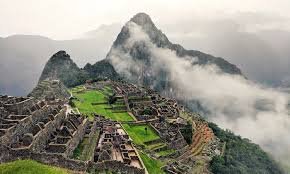Machu Picchu, one of the New Seven Wonders of the World, is a breathtaking archaeological site nestled high in the Andes Mountains of Peru. This ancient Incan city, often referred to as the “Lost City of the Incas”, is a masterpiece of engineering, architecture, and history. With its stunning landscapes and deep cultural significance, Machu Picchu remains one of the most visited and photographed sites in the world. In this article, we will explore its history, architecture, significance, and interesting facts.
The History of Machu Picchu
Machu Picchu was built by the Inca Empire in the 15th century, during the reign of Pachacuti Inca Yupanqui. It is believed to have served as a royal estate, a religious site, or an important ceremonial center. The Incas constructed the city using advanced engineering techniques without the use of iron tools, wheels, or mortar.
Despite its grandeur, Machu Picchu was mysteriously abandoned in the 16th century, possibly due to the Spanish conquest, disease, or political conflicts. However, the Spanish never discovered the site, allowing it to remain well-preserved for centuries.
In 1911, American historian Hiram Bingham rediscovered Machu Picchu with the help of local indigenous farmers. His discovery brought global attention to the site, and today, it is recognized as a UNESCO World Heritage Site and a symbol of Peruvian heritage.
Architectural Marvel and Engineering Feats
Machu Picchu is an astonishing example of Incan architecture and engineering. The city is divided into two main sectors:
1. The Agricultural Sector
- Features a series of terraces used for farming, which prevented soil erosion.
- Built with a sophisticated irrigation system that ensured a steady water supply.
2. The Urban Sector
- Houses the Temple of the Sun, a sacred site aligned with the solstices.
- The Intihuatana Stone, a carved rock used as a solar clock.
- The Temple of the Three Windows, symbolizing the Incan worldview.
- The Royal Tomb, believed to be the resting place of Incan nobility.
The most remarkable aspect of Machu Picchu’s construction is the use of dry-stone masonry, where precisely cut stones fit together without mortar, making the structures resistant to earthquakes.
Why Machu Picchu is Important
Machu Picchu is not only a tourist attraction but also a site of immense historical, cultural, and spiritual importance:
- An Incan Masterpiece – Demonstrates the Incan civilization’s architectural and engineering prowess.
- A Cultural Symbol – Represents the rich heritage of indigenous Andean cultures.
- A Spiritual Site – Thought to be a religious or ceremonial center for the Incas.
- A Global Landmark – One of the most visited sites in South America.
How to Visit Machu Picchu
There are several ways to reach Machu Picchu, each offering a unique experience:
1. The Inca Trail
A famous 4-day trek through breathtaking landscapes, ancient ruins, and lush jungles, leading directly to the Sun Gate.
2. Train to Aguas Calientes
Visitors can take a scenic train ride from Cusco to Aguas Calientes, followed by a bus or hike up to the ruins.
3. The Salkantay Trek
A more challenging but rewarding alternative to the Inca Trail, offering stunning views of the Salkantay Mountain.
Best Time to Visit
- The dry season (May to September) is ideal for visiting, offering clear skies and better hiking conditions.
- Early morning or late afternoon visits provide the best photography opportunities with fewer crowds.
Interesting Facts About Machu Picchu
- The name “Machu Picchu” means “Old Mountain” in Quechua, the indigenous language of the Andes.
- It sits at an elevation of 2,430 meters (7,970 feet) above sea level.
- Machu Picchu was never discovered by the Spanish conquistadors, preserving its originality.
- Only 500 permits per day are issued for the Inca Trail to protect the site from over-tourism.


